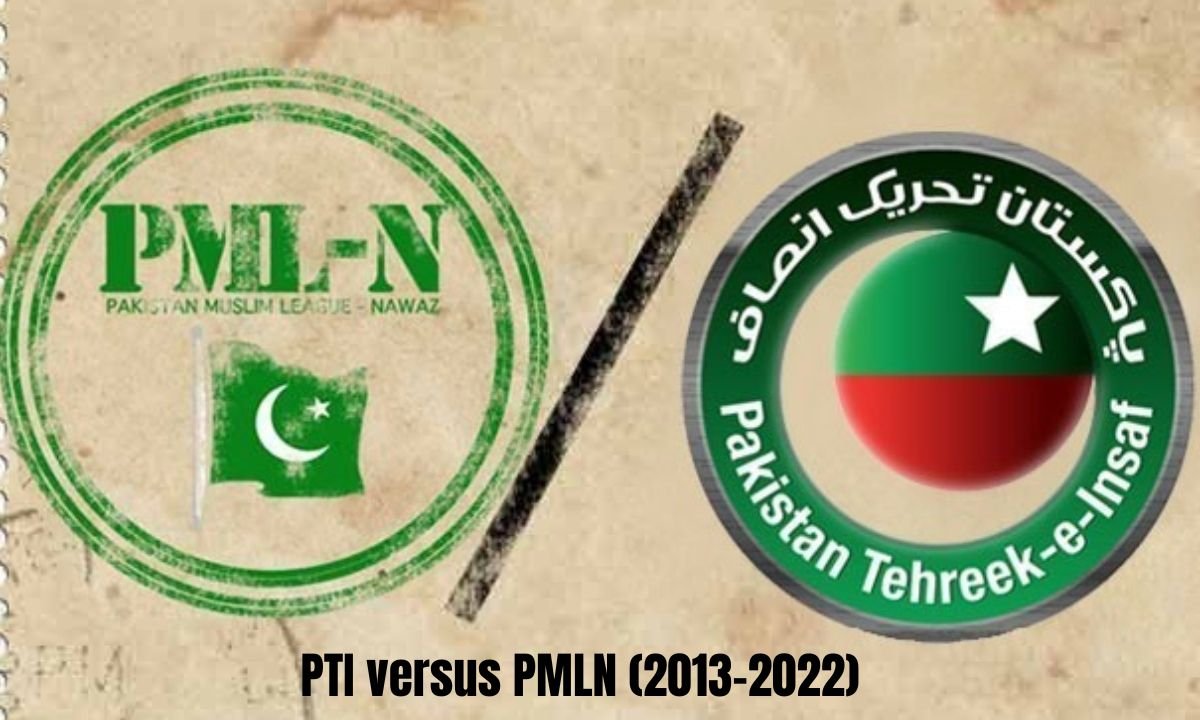Economic performance of PTI vs PMLN 2013-2022
This article compares the economic performance of the two largest political parties, PTI vs. PMLN, from 2013 to 2022 for Elections 2024. Pakistan has a lot of problems, both economically and geopolitically.
The GDP growth rate of Pakistan decreased from 0.29%-0.17% during 2022-2023. The economy is stuck in inflation because the final growth rate of GDP for 2021-2023 was estimated at 6.17% compared to 6.10% in the revised estimates.
Uncertainty around upcoming elections and IMF funding adds to the economic crisis. Immediate stability and strategic actions are crucial for a robust recovery.
However, the economy of Pakistan has changed from its previous performance. Economic trends were different under the governments of PTI and the PML-N that came before it. Let’s dive into the economic performance of PTI vs PMLN:
GDP Growth:
GDP refers to gross domestic product. Rising GDP means the economy is growing, and the resources like goods, services, profits, and employment available to people are increasing.
The PMLN-led government ran Pakistan from 2013 to 2018, during which GDP grew from 3.68% in 2013 to 5.53% in 2018. It increased from $258.9 billion in 2013 to $356.8 billion in 2018.
However, the PTI-led government had difficulty keeping up with this rise in GDP growth. The GDP decreased to 3.94% at $348.26 billion in 2021. It shows a significant decrease of 8.4 billion rupees.
This massive drop in economic growth makes people worry about how much low progress has been made under the tenure of PTI. The economic performance of PTI vs PMLN based on GDP growth gave PMLN an edge over PTI.
PMLN

PTI

Dollar Exchange Rate:
A higher dollar exchange rate causes inflation and expensive imports in the country. Since 2021, the dollar exchange rate has been growing under the PTI government.
However, Pakistan also made progress in lowering the dollar exchange rate. PMLN government maintained the exchange rate at 99-100 PKR in 2013. It rose to a slight increase of 123-125 PKR in 2018. However, it went up to a significant rise of 188.88 PKR in 2022 under PTI tenure.
PMLN

PTI

Current Account Deficit:
A low Current Account Deficit means a high growth rate for the country, so it should be low. The current account deficit was $2.5bn under PMLN tenure in 2013. It rose to a significant high of $3.689bn in 2018.
In this regard, PMLN left a very high current account deficit for the upcoming PTI but managed to keep it at $3.4bn in 2022.
PMLN

PTI

Unemployment rates:
Low unemployment rates show positive growth in the financial condition of people. PMLN decreased the unemployment rate from 6.2% in 2013 to 5.8% in 2018.
On the other hand, PTI failed to decrease unemployment in the country as the unemployment rate increased from 5.8% to 6.3% during 2018-2021.
PMLN

PTI

Trade Deficit:
A high trade deficit rate by imports shows a disruption in overall national competitiveness by decreasing exports and national economic performance. The high trade deficit decreases the total international investment in the country by raising external purchasing.
When PMLN was in power, Pakistan had a trade deficit of $15.4bn in 2013. It went up to $26.68n by a 4% increase in 2018. It was not going well, and it further rose to an additional trade deficit rate of $35.5bn with a 9% increase in 2022.
PMLN

PTI

Foreign Remittances:
Foreign Remittances refer to money sent by individuals who work abroad to their home country. High foreign remittances boost the national economy as they help to stabilize the balance of payments and exchange rates.
Foreign Remittances increased by 6% at $29.473 under PTI tenure in 2021, which showed progress in foreign trade. It was half by 3% with $19.913 in 2018 from $13.921bn in 2013 under the PMLN rule.
PMLN

PTI

Net reserves with SBP:
The total reserves of the State Bank of Pakistan (SBP) are a significant indicator for measuring the strength of a country. The total reserves of SBP show the financial status and stability of all individual banks and the overall state of the central bank.
The net reserves with SBP were $6.826bn in 2013, which increased to $9.765bn in 2018 during PMLN tenure. On the contrary, PTI managed to increase these reserves to only $10.855bn in 2022. In this regard, PMLN performed better than PTI.
PMLN

PTI

Debts and liabilities:
It is great for a country to have low debts and liabilities to achieve a stable economy. When PMLN came into power, in June FY13, total debt and liabilities were Rs.14,366 billion which rose to Rs.24,953 billion at the end of June FY18.
And when PTI came into power, the debt and liabilities increased from Rs.24,953 billion to Rs.54,484 billion in FY22.Q1. Public debt increased by Rs.29,537 billion, which is double the debt taken by PMLN.
PMLN

PTI

Petrol Prices:
The PTI government era also witnessed an increase in petrol prices, which showed an increase of 54 rupees at 149.86 PKR towards the end of their term in 2022.
However, the PMLN era witnessed a decrease in petrol prices by 4 rupees from 99.77 PKR in 2013 to 95.24 PKR in 2018.
PMLN

PTI

Click here to read the updates on PTI and PMLN’s launched online store to sell party-branded items
CPI Inflation rate:
CPI refers to the Consumer Price Index. It should be lower because it shows the prices of goods are decreasing or stable. It helps people to buy goods easily. In short, low CPI means a low inflation rate.
However, it was hard for the PTI government to keep inflation under control. The CPI inflation rate went from 7% in 2018-2019 to an unbelievable 11.2% in 2019-2020 under the PTI govt. Meanwhile, PTI tried to keep it at 8.6% in 2020-2021.
On the other hand, PMLN performed well in keeping the CPI inflation rate at a significant low of 3.8%. Despite this fact, PMLN received a very high inflation rate of 8.7% in 2013 -2014.
PMLN

PTI

It is important to note that the pandemic COVID-19 hit the world from 2020 to 2022 and it was a global pandemic that had severe effects on businesses all over the world.
Even the developed countries had to deal with its effects and faced a sharp drop in the GDP growth rate. Moreover, inflation reached levels not seen in decades.
It’s crucial to consider the broader context, including global circumstances and the nature of the pandemic when assessing a government’s performance during these challenging times.
Disclaimer: This article incorporates official government links and statistics to provide you with a comprehensive analysis.
Read More:
- Section 144 imposed in Punjab & Islamabad-banned rallies, protests
- Famous businessman Zulfiqar Ahmed went missing in Karachi
- PTI worker Neeli Pari arrested for attacking PMLN President Tahir Anjum
- British police brutally tortured two Pakistanis at Manchester Airport
- President Joe Biden administration demanded $101 mn aid for Pakistan
- Mastermind of Karachi Police Office attack killed in CTD Operation
Share this content:









Post Comment